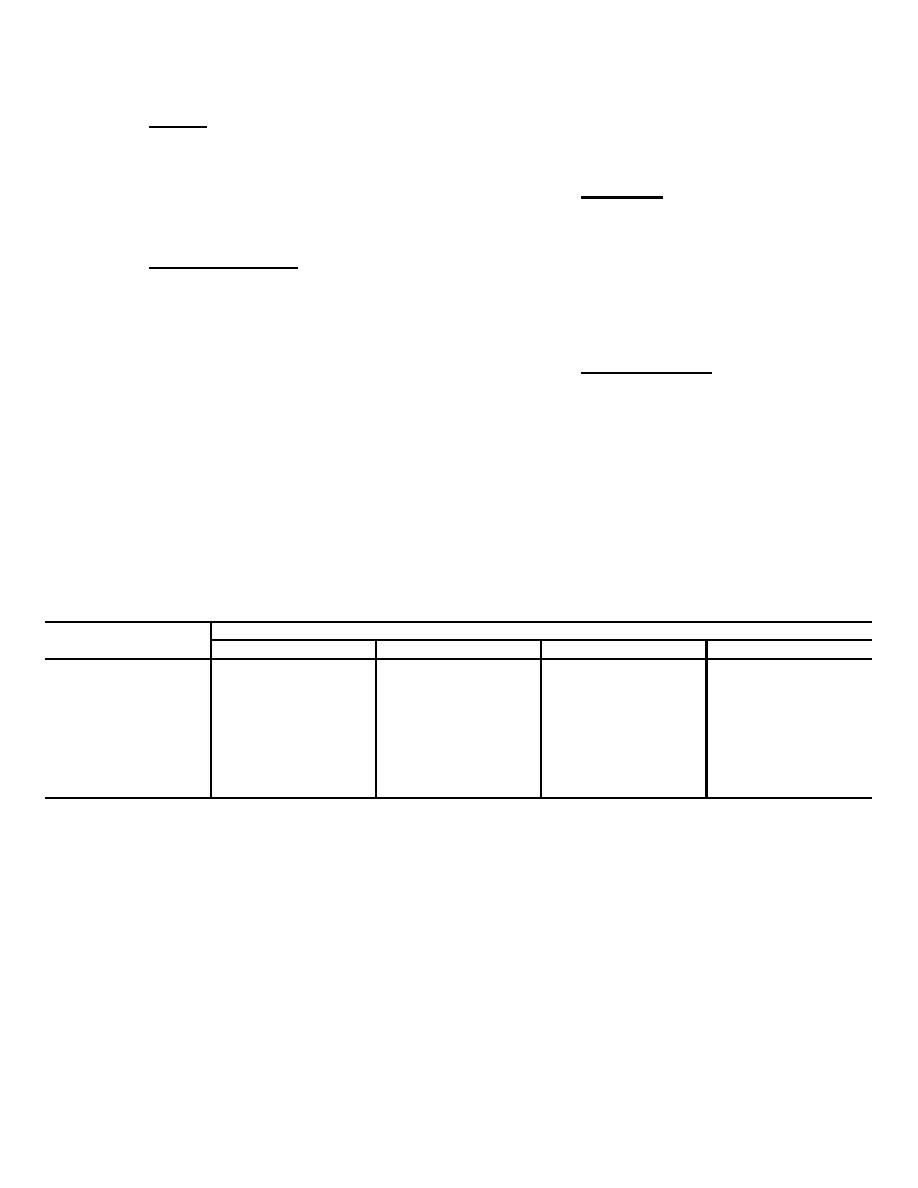 |
|||
|
|
|||
|
Page Title:
Table 2-1. Weather and Time Factors for Disposal of Chemical Munitions |
|
||
| ||||||||||
|
|
 TM 9-1300-277
agent clouds released under lapse conditions tend to
(2) Volatility. There are several factors which
dissipate more rapidly than under neutral or inversion
influence the period of time a chemical agent will exist
conditions. Obviously, disposal work is best conducted
at the point of its release. Volatility is important in
under lapse conditions whenever possible.
determining the persistency effect of an agent. Volatility
varies directly with temperature. A liquid or solid
(4) Wind speed. Persistency is also affected
chemical having high volatility will evaporate or turn into
by wind speed. As wind speed increases, the chemical
a gaseous state more rapidly than a chemical of low
agent cloud covers the downward hazard area more
volatility.
rapidly; however, the cloud will diffuse sooner and thus
travel a shorter total distance. Buildings, vegetation,
(3) Temperature gradient. The temperature
large bodies of water, contour of the land and other
gradient also effects the persistency of a chemical
terrain features play an important role in the duration of
agent. Temperature gradient is the difference obtained
effectiveness of agent at its point of release and its
by subtracting the air temperature 0.5 meter (1.6 feet).
diffusion downwind. Any obstruction to the movement
above the ground from the air temperature 4 meters (13
of air creates turbulence which breaks up the clouds.
feet) above the ground. If the temperature at 4 meters
(13 feet) is greater than that at 0.5 meter (1.6 feet), an
(5) Rain and humidity. Rain and humidity
inversion or stable atmospheric condition exists.
vary in their effect on chemical agents. Depending
Conversely, if the temperature at 4 meters (13 feet) is
upon the chemical involved, rain can hold the cloud
less than that at 0.'5 meter (1.6 feet), a lapse or unstable
close to the point of release or wash the chemical from
atmospheric condition exists. If the difference is 1
the air. Moisture from rain or high humidity will cause
degree or less, a neutral condition exists. Chemical
some chemicals to break down through hydrolysis.
Table 2-1. Weather and Time Factors for Disposal of Chemical Munitions
Factor
Condition
Excellent
Fair
Fair*
Unsatisfactory**
Temperature
75 and above
F
55 - 75
F
F
Under 55
F
Under 55
F
Sky
Clear
Partly Cloudy
Clear
Cloudy
Wind
4 mph - 15 mph
5 mph - 20 mph
7 mph - 15 mph
Under 3 mph or
over 20 mph
Time of Day
1000-1600
1000-1600
1000-1600
*This column pertains to winter conditions. When the ground is covered with snow, however, the disposal of toxic agents
and munitions is not feasible.
**Chemical agents or munitions will not be disposed of under these conditions but only when extreme emergency
conditions prevail.
2-4
|
|
Privacy Statement - Press Release - Copyright Information. - Contact Us |